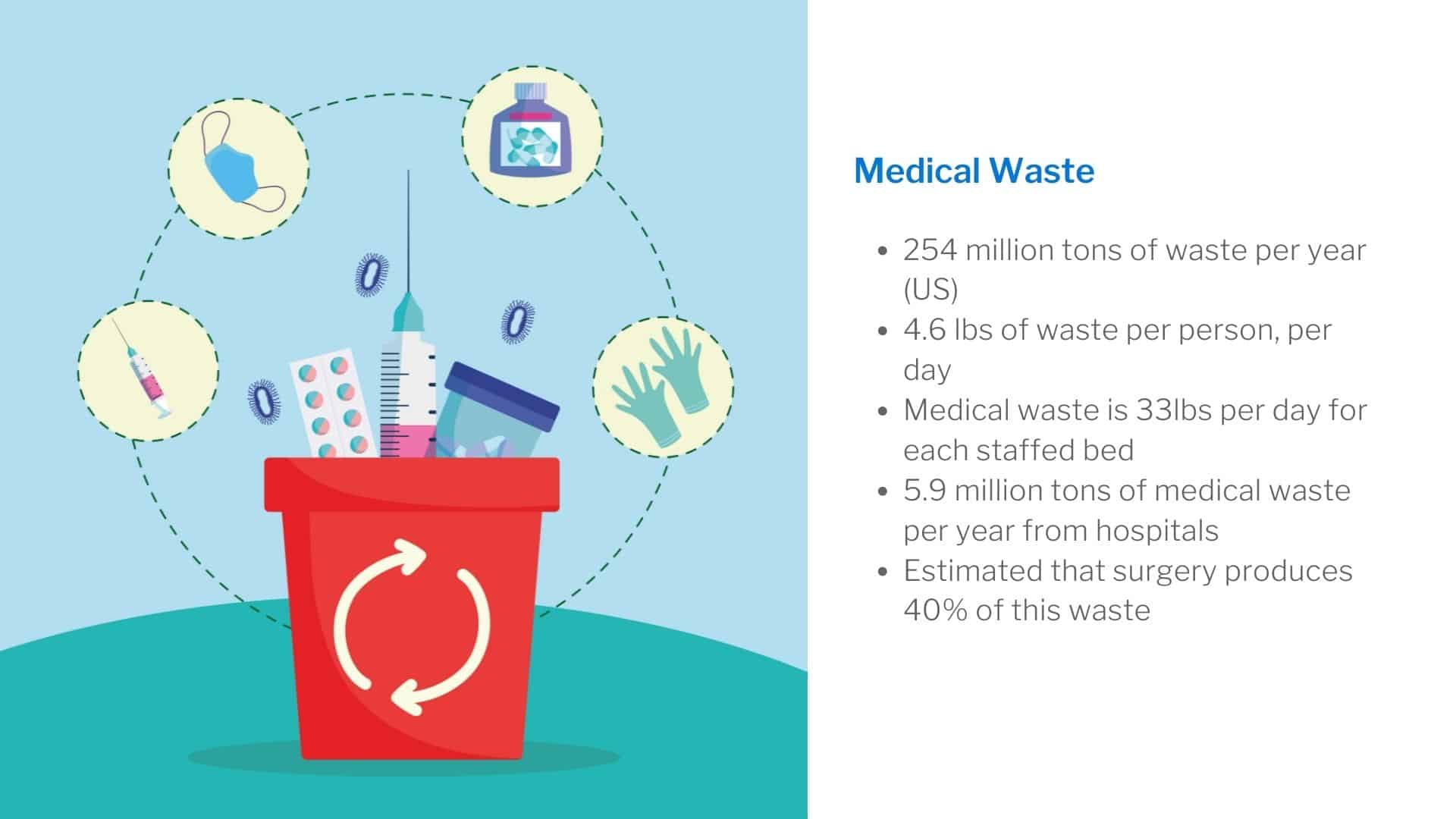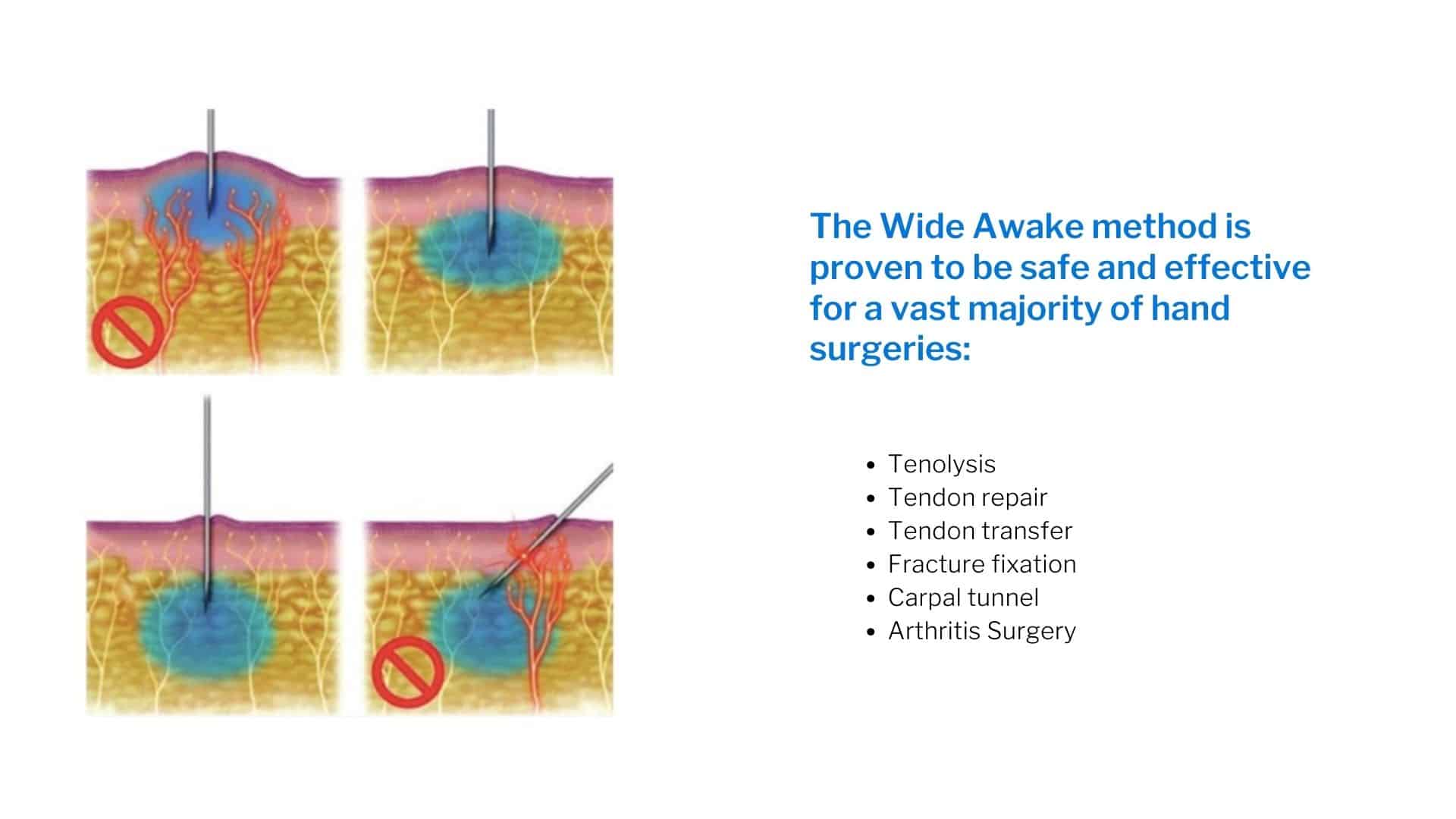Wide Awake Hand Surgery Using the WALANT Method [Full Webinar Recap]
Did you know you can stay awake for hand surgery with the WALANT surgical method? Wide Awake Hand Surgery is one of the latest techniques in orthopedic hand surgery that allows the patient to remain fully awake during surgery. No anesthesia needed! In this webinar, Dr. Daniel Gaffney, Board-Certified Orthopedic Specialist explains what it is, how it works and the many benefits to having wide awake hand surgery!
Webinar Outline:
- Healthcare Costs
- Financial Impact
- Surgical Cost
- Economics of WALANT
- WALANT? What is it?
- Candidates & Types of Surgery
- Benefits of Wide Awake Hand Surgery
- Outcomes
- LIVE Q&A
Wide Awake Hand Surgery, known as WALANT, has become an extremely popular topic among hand surgeons both in the United States and abroad because of its diverse impacts on our healthcare systems. WALANT impacts the healthcare costs both as a system and to the individuals. It impacts the surgical costs to hospitals and clinics.
What is WALANT? What does it stand for?
WALANT stands for Wide Awake Local Anesthetic No Tourniquet and is a specific technique of wide-awake hand surgery.
What are the economic benefits of WALANT (Wide Awake Hand Surgery)?
The impact economically of doing hand surgery wide awake is tremendous. Typically hand surgery is done with anesthesia in facilities that charge facility fees. WALANT hand surgery uses a local anesthetic so the procedure can be done in clinic or an outpatient procedure room which is less expensive.
FACT: Medical bills are the leading cause of bankruptcy in the United States today. And as of 2018, over one in five Americans had medical debt.
Because Wide Awake Hand Surgery is less costly, patients will monetarily benefit from the WALANT method.

Wide awake hand surgery also reduces the amount of medical waste.
Medical waste is estimated to generate 254,000,000 tons of waste per year, and medical waste is about 33lbs per day for each staffed bed per hospital in the United States. It's estimated the surgery department produces about 40% of this medical waste.
Is there a better way?
"Local anesthesia with no tourniquet provides similar outcomes and lower cost and dramatically less waste... and there's no mind altering medicines involved," explains Dr. Daniel Gaffney, Wide Awake Hand Surgery specialist.
How does Wide Awake Hand Surgery (WALANT method) work?
"We inject local anesthetic at the surgical site and don't use a tourniquet. There's no pain from a tourniquet applied to the upper arm or lower arm to prevent bleeding because the local anesthetic does that job for you. That also means no pain associated with the tourniquet and no lack of blood flow to the limb during the time that the tourniquet on," says Dr. Gaffney. "Some of the upsides are eliminating any side effects or risk of anesthesia. It eliminates the long wait time before the surgery, as well as the long time in the recovery room after the surgery. It also does not require any pre-surgical fasting or presurgical testing."
What kind of hand surgery procedures and conditions can be treated with Wide Awake (WALANT method)?
- Tenolysis
- Tendon repair
- Tendon transfer
- Fracture fixation
- Carpal tunnel
- Arthritis surgery
All of these are great options to be performed under a wide awake local anesthetic in the setting of trauma where there are cut tendons. "Performing tendon repair surgery is one of my favorite things to do under a wide awake locally anesthetic because it offers both surgeon and patient to actually see the tendon repair working in real time," said Dr. Gaffney. "If it holds up to active motion in the operating room, you know it will hold up to active motion during the rehabilitation process."
Tendon transfer surgery is an excellent option under wide awake local anesthetic because many different kinds of fractures under a local anesthetic can be fixed. Carpal tunnel surgery can be done under a local anesthetic, and some arthritis surgery can be done as well as cubital tunnel release. "Now, there are patient specific factors that may make this possible or not possible in any given patient, and it's definitely up to the surgeon's discretion," explains Dr. Gaffney.

What to expect on the day of Wide Awake Hand Surgery
On the day of a wide awake local anesthetic, no tourniquet procedure, your surgeon will meet you in the preoperative surgical holding area. They'll confirm the operation to be done and mark their surgical site. Then the local anesthetic will be injected, typically in the preoperative area. The technique is very specific as the needle enters the skin at a 90 degree angle to the skin so that it's not going through any excess amount of nerves, and it goes completely beneath the skin into the subcutaneous tissue.

How does the local anesthetic in Wide Awake Hand Surgery work?
We very slowly inject a special preparation of local anesthetic with a bicarbonate buffer. It also has epinephrine in it. The epinephrine decreases the bleeding at the time of surgery and lengthens the time that the anesthesia is working in the system. We inject very slowly as the speed in which the medicine enters the system impacts how much it hurts as well, and we use large volumes. We inject large volumes of local anesthetic to ensure that the patient will be pain free during the procedure, that the anesthesia will last throughout the procedure, and that will provide some post operative pain relief as well.
The large volume also decreases the risk of bleeding at the time of the surgery. As we inject the anesthesia into new areas, we make sure and inject anesthetic in front of the tip of the needle, with the goal being that after the first poke, patients shouldn't feel any more pokes during the procedure. Of injecting the local anesthetic. Following the injection of the anesthetic, we usually give several minutes to allow for the anesthesia to take effect.
At that point, the person is brought back to the operating room. Often, you're allowed to walk back to the operating room because you're wide awake, you don't have an IV typically, and you've had no mind altering medicines to make you unable to walk. When you get back to the operating room, the hand or if you're doing the procedure in the clinic, the hand is sterily, prepped and draped. The procedure is performed, and the patient can even view and interact with the surgeon and the assistance during the operation. If there are fractures fixed or tendons repaired, we ask the patient to move their hand to demonstrate.
"Can you close? Can you open your hand? Are things moving? Are things functioning right?" It gives both patient and doctor great reassurance about the strength of any repairs performed and gives the patient the opportunity to see the inside of their body.
To see a tendon moving is really a tremendous experience for the right person. If you're squeamish or are not interested in looking at things, it's not mandatory. You don't have to look.
Following the completion of the procedure, the skin is closed under routine fashion, and dressings are applied, and you're ready to go home. It's just that quick.
What are the benefits to Wide Awake Hand Surgery?
No time spent in recovery, no nausea, no vomiting, no other side effects afterwards, and the local anesthetic will typically stick around for at least 3 hours from the time injected.
If a longer active anesthetic is used, getting back to some of the economics, we know that this can save hundreds just in supplies alone for a single case. All the excess materials aren't required during wide awake local anesthetic. Plus you save on pre surgical testing and anesthesia costs.
"I love my anesthesiologist. They do wonderful work. They alleviate anxiety. They alleviate pain. They allow us to do more invasive surgery that we never could do without it. But for surgery that doesn't require a general anesthetic, local anesthesia is much safer and much less expensive," says Dr. Gaffney.
Additional benefits:
- No post surgery recovery time - you can just go home! Some people are even able to drive themselves home after the surgery!
- No presurgical fasting or presurgical workup.
- Able to test the repairs in real-time
Can patients interact with the surgeon during the Wide Awake Hand Surgery?
We can educate the patient on what to expect after surgery, what their rehabilitation may look like, what their activity restrictions may be, what to expect with regards to numbness or tingling or pain, and then more of their long term outcomes. It's a great chance to bond doctor and patient and a great chance for the patient to learn more about their condition and what to expect in the days and weeks to come. Patients really enjoy this as well. If it's in an operating room, oftentimes there's music playing... and yes, we let the patient pick their own music!
How soon can you get back to work after Wide Awake Hand Surgery?
Oftentimes taking two or three days, perhaps a weekend or a little bit of a long weekend should be enough to get back to work. Now, it's not like you're pain free. You won't be as fast or efficient on a keyboard or a phone or a mouse as you were before the surgery. But it shouldn't be dangerous to return to work in that short period of time.
If you have to do more heavy manual labor, it may be four or six weeks, occasionally even longer to get back.
Wide Awake Hand Surgery hits all the important aims in health care today to try and make healthcare more sustainable and get better outcomes for our patients and a more pleasant experience as well.
If you'd like to listen to the Q&A Section of this webinar, please go to the youtube video above and scroll to the 15:50 mark.
Have more questions? Book an appointment with Dr. Daniel L. Gaffney, Wide Awake Hand Surgery Specialist.
